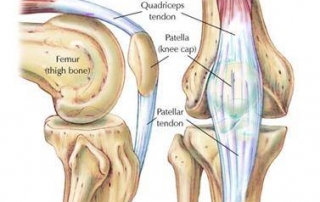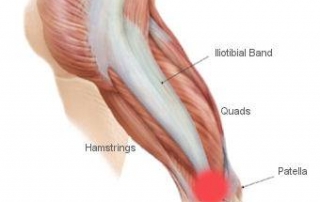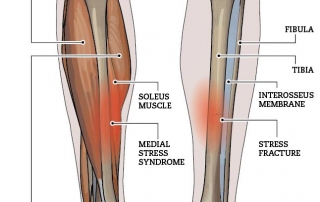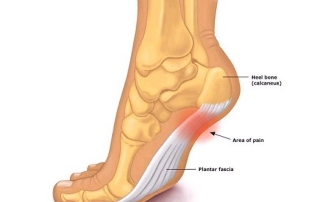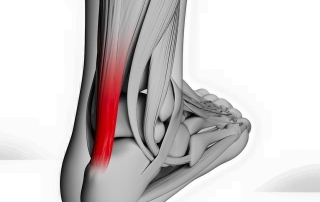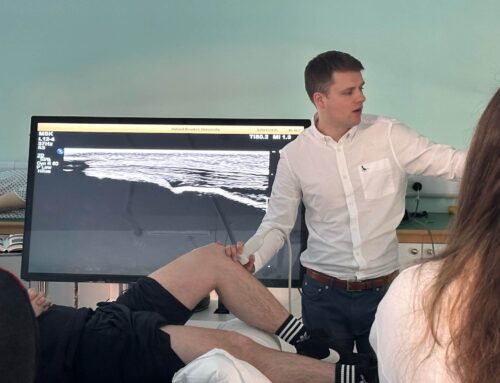As marathon season approaches many of you will be lacing up your running shoes and heading out into the miserable weather to get yourself fit for the big day. There have been numerous studies into marathon training related injuries – some studies reporting up to 90% injury rate for those training for the marathon. Unsurprisingly, the majority of these injuries are to the lower extremities, so have a look at our top 5 most common running injuries and our top tips on how to treat and prevent them:
Patellofemoral pain syndrome
An umbrella term referring to pain into the front of the knee. Can be due to softening of the cartilage behind the kneecap or poor alignment of the kneecap within its groove. Treatment focuses on aligning the kneecap within the groove. Taping can be useful in the initial stages of treatment. Rehabilitation aiming to achieve normal knee alignment particularly during squatting/jumping/landing is extremely important to treat the cause of the injury.
Iliotibial band friction syndrome
The iliotibial or IT band runs from the outside of the hip and attaches just below the knee. Pain occurs when there is increased friction between the band itself and the bone on the outside of the knee. Reducing the tension through the iliotibial band is one of the key factors to reduce IT band related pain. Stretching the IT band is very difficult meaning massage or the use of a foam roller is often more effective.
Medial tibial stress syndrome
Commonly referred to as shin splints, medial tibial stress syndrome (MTSS) occurs when the muscle that attaches to the inside of the shin bone is overloaded; which when you are challenging your body and increasing your training load for the marathon, this load can cause a traction or pulling force on the bone itself. Decreasing the traction force of the muscle onto the shin bone is the main aim of treatment. A combination of massage and taping often prove to be effective strategies. Foot position and footwear itself can contribute largely to injury – addressing these factors are important to treat the cause of the injury.
Plantar fasciitis
The plantar fascia is a connective tissue that runs along the sole of the foot, contributing the arch and the push off force in the “toe off” stage of running gait. Pain is often felt into the heel or the bottom of the foot. The plantar fascia can become damaged and thickened with an increase in training. Physiotherapy can help to reduce the inflammatory signs of plantar fasciitis and as a result reduce the pain you’re experiencing. Like MTSS, foot position and footwear can have a large impact on injury.
Achilles tendinopathy
The Achilles tendon connects the calf muscles to the heel bone. Running results in approximately 6-8 times your bodyweight going through your Achilles tendon each time your foot strikes the ground. Unsurprisingly the Achilles tendon can become overloaded and painful when training volume is suddenly increased – somewhat unavoidable when you’re training for a marathon! However physiotherapy can help, tendon pain must be managed accurately otherwise the pain can be prolonged and even stop your marathon hopes. Stretching of the calf muscles and specific loading of the tendon can be effective pain relief strategies, so if you are worried about your Achilles please do call, email or catch us on here to seek advice.
Small injuries can make massive differences to your training schedule, so if you are in any doubt regarding your injury contact Elite Physical Medicine:
01296 437717
Twitter: @epmphysio
Facebook: Elite Physical Medicine
Email: enquiries@elitephysicalmedicine.co.uk

